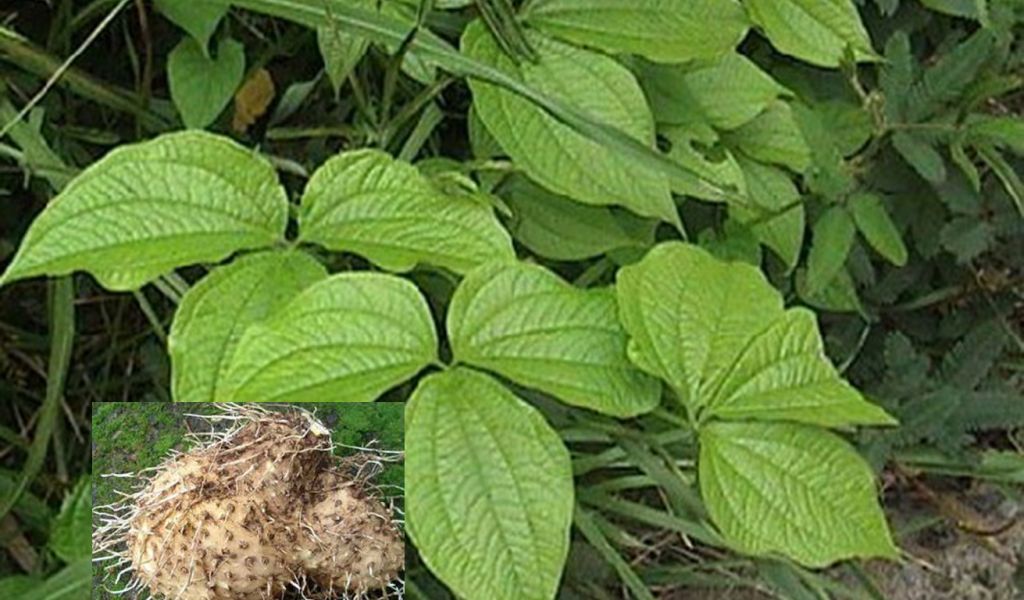ຫົວກອຍ / Asiatic Bitter Yam
APA 6th ed. ຫົວກອຍ / Asiatic Bitter Yam. (2021, September 7). Retrieved from https://www.phakhaolao.la/kb/0000010
MLA 8th ed. ຫົວກອຍ / Asiatic Bitter Yam. Pha Khao Lao, 7 September 2021, https://www.phakhaolao.la/kb/0000010.
Chicago 17th ed. Pha Khao Lao. 2021. "ຫົວກອຍ / Asiatic Bitter Yam." Published September 7, 2021. https://www.phakhaolao.la/kb/0000010.

Dioscorea hispida var. reticulata (Hook.f.) Sanjappa
Helmia daemona (Roxb.) Kunth
Helmia hirsuta (Blume) Kunth
Local names: koi, kheua koi
Thai: man koi, man kloi, llah sah, man non, kloi khao chow, kloi nok,
kloi kai, khli (white flesh), khoi khao nio, kloi hua nio (yellow flesh).
Cambodian: do khouch, voeur khouch
Burmese: kywe
Vietnamese: cu nan, train an et, diau nan in
English: Asiatic bitter yam
Koi is a perennial climber up to 2 m long, with stems twining to the left, with thorns, and a system of fibrous roots, some of which develop into small round tubers when young. These stretch when mature, but remain ball-shaped and can reach 30 cm in diameter and 35 kg in weight. The lobed tubers are brown and covered on the outside with fibrous rootlets that are straw to light-grey coloured. The raw, poisonous flesh is white to lemon-yellow in colour. The stems are 9 mm in diameter, usually prickly, and green to straw-coloured. Leaves are sized 30 x 28 cm and contain three leaflets with spines on the large nerves on the back and a hairy lower surface. Male inflorescence are 50 cm long, bending downward, with yellow or pale-brown flowers covered with white hair. Female inflorescence are solitary. The winged fruit capsules are honey-coloured and measure 40-60 x 10-12 mm. The seeds also have wings. Four varieties occur in the Indochinese region: var. mollissima, var. scaphoides, var. hispida and var. dalmona. 12-15 species of yams grow wild in Indochina, with Dioscorea alata L. (Man Phao Khao) and D. bulbifera L. (Man Pao) often cultivated.
Koi tubers are eaten as a substitute for rice during food shortages. However, the poison in the tubers must be removed before this yam can be eaten: a piece of raw tuber the size of an apple will paralyse the central nervous system and is sufficient to kill a man in six hours. Koi starch is used to make sweets, usually eaten with sticky rice, while the tubers also have several medicinal qualities. They are commonly used to heal skin diseases or irritations and aching joints, and in Thailand slices of tuber are applied to relieve stomach muscle cramps and to clean wounds. The poison is used on arrowheads and in fishing, and in India to kill tigers by hiding it in the carcasses of cattle. In Malaysia Koi has been used as an antiseptic and it is also known to possess insecticidal properties.
